Droog ♥ Bloc
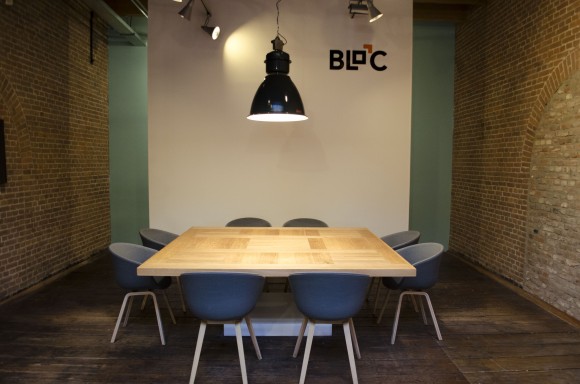
Droog’s Design+Desires team is now partnering with area developer Bloc to develop new projects for the Design+Desires program. We come back soon with more…

Droog’s Design+Desires team is now partnering with area developer Bloc to develop new projects for the Design+Desires program. We come back soon with more…
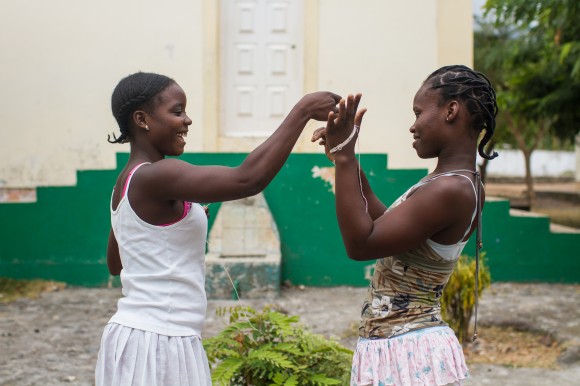
Droog is commissioned to redesign the CACAU cultural center in São Tomé. The aim is to contribute to a sustainable socio-economic infrastructure. Therefore 25 local women and men under guidance of textile designer Nikkie Wester will be trained for 4 weeks to weave and dye banana fiber.
Together they make a huge textile for the interior. After completion, they can use their newly learned skills for their own economic actvities and other projects.
On 21 December 2015 Sarriel Taus and Renny Ramakers organized their first dinner with refugees at Hôtel Droog. 35 Dutch guests mingled with 35 refugees from Syria, Irak and Eritrea, christians and moslims.
It was a night full of hearth breaking stories about crossing the Sea in rubber boats, the transit through Turkey, Macedonia and so on, the continuously bombing in their home land – a hairdresser told us that his hair salon had been completely destroyed and while we were eating and drinking, my neighbour at the table received a text message from a friend saying that his house was in between two fires. They showed pictures of their family left behind and they told us about their life in the refugees shelters. For some if them it was the first time to meet Dutch citizens. Their biggest frustration is that they don’t have any money while not being permitted to do any work. They don’t want to keep their hand up. They just want to work, to start an enterprise, to start a new life. And now the only thing they can do is wait. Many of them were eager to learn Dutch and one guest hilariously practiced Dutch proverbs.The 35 refugees were all men.
On 15 February 2016 a second dinner was organized, this time with women only and a few gay men. The atmosphere was totally different. It was again evening full of shocking stories. But we also saw new friendships arise. Afterwards we got very positive feedback from the refugees aid organization. They told us that everyone was enthousiast and that the evening gave the refugees hope and trust.
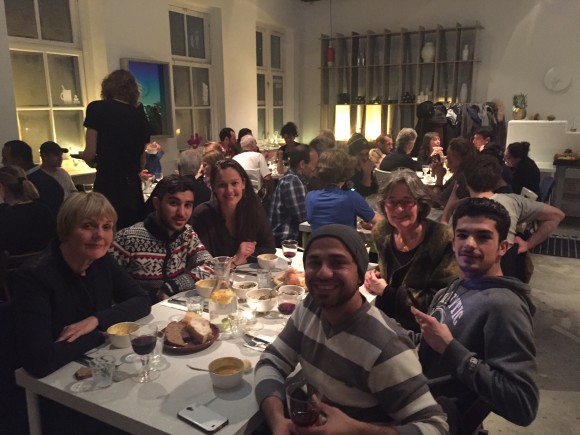
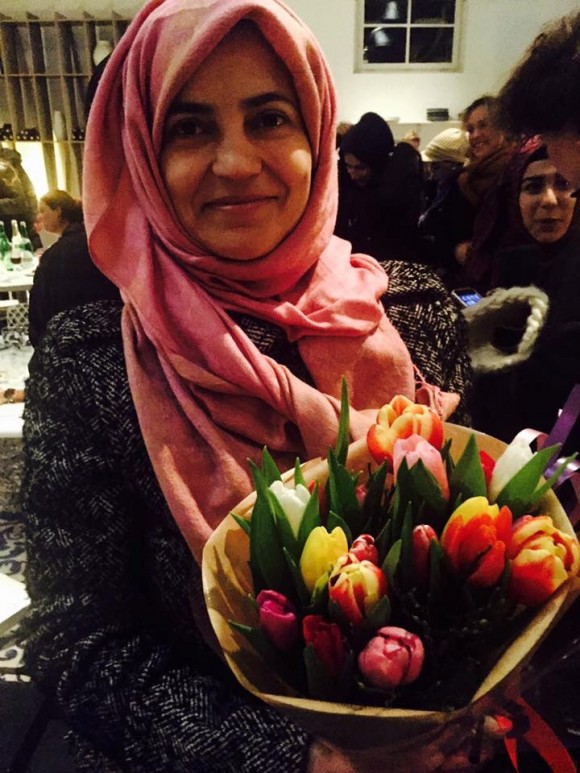
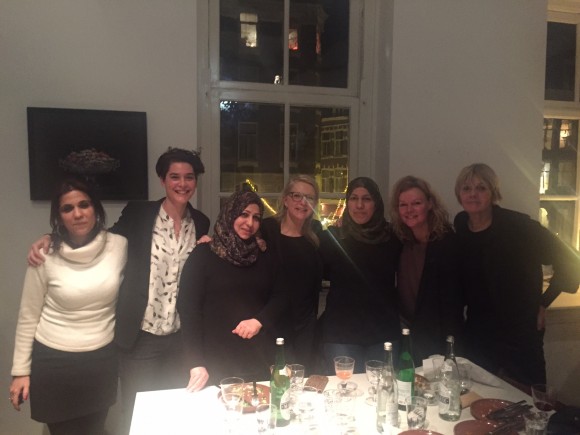
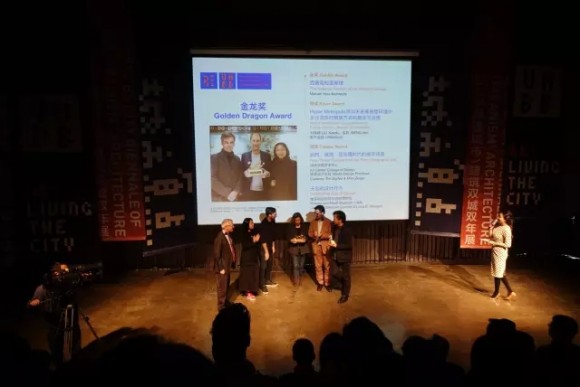
Social City wins Peoples’ Choice Award at UABB 2015/2016
We (Droog, OSCity, Jan Rothuizen) are happy to announce that our project Social City, which is part of the Design+Desires program, has won the Peoples’ Choice Award at the UABB 2015/2016. The jury stated: ““Symbiotic Village”, “City of Wind”, and “Social City” won public recognition for their creativity, sense of presence and visual presentation through a poll conducted at UABB venues, on the official website and platforms like WeChat, over a period of one month.”
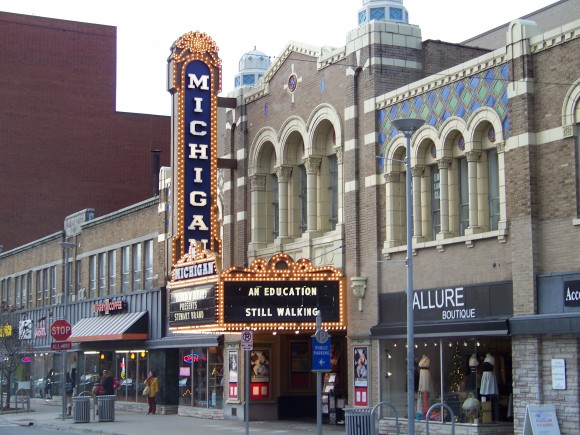
On Thursday April 7, 2016, Renny Ramakers will give a presentation at the Penny Stamps Speaker Series in Ann Arbor (MI). She will talk about her inspiration and work, and Droog’s latest people-centered urban research-and-do program called Design+Desires. Renny will tell something about her fascination with Russian constructivism and De Stijl movement, and how this has influenced on her path and that of founding Droog and its many different projects. The Penny Stamp Speakers Series offers a unique art & design education within the University of Michigan. Focusing on creative practice as an engine for cultural change and innovation.
Thursday April 7, 2016
5.10 PM
Michigan Theater
603 E. Liberty Street
Ann Arbor, MI 48104
The event is free of charge and open to the public.
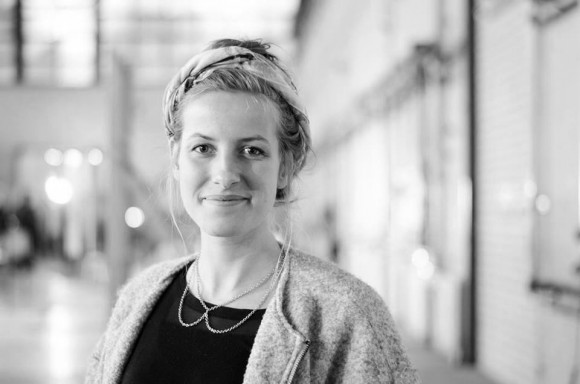
Nikkie Wester, is a Dutch textile product designer with a great passion for craftmanship and folklore. Her work always follows comprehensive research into cultural traditions, rituals and its origin, which is expressed in experiments with different textile materials. A great part of her designs infuse colour and symbolic references – and we got talked with her about her latest designs – the Fiske Fish Socks, which she designed upon learning about her own family history. www.nikkiewester.com
Fish Socks by Nikkie Wester from Nikkie Wester on Vimeo.
You can purchase the Fiske Fish Socks at the Droog Shop at Staalstraat 7B – now open from 9am-7pm everyday.
Orange Socks (Women’s Sizes): €59,95 – Sizes 36-41
Grey Sock (Men’s Sizes)s: €64,95 – Sizes 41-46
—
We talk with Nikkie in an exclusive interview about her latest designs:
The Fiske Fish Socks are very playful, do you often weave play into your designs?My work has always been very conceptual, to keep it light-hearted I use humour. Without a twist, a collection can turn out to be too serious or heavy and therefore unattainable for public.
How long does it take to make a pair of Fiske fish socks?
The socks are knitted by hand, that can be a slow process though the women who do that work very quick. The can make a pair of socks in a day. I admire their knitting skills, they truly master the craft.
What is the name of the knitting technique used in the Fiske fish sock?The socks are knitted in a cable stich. This particular stich was used to make the traditional fishermen attire. By the use of this cable the textile becomes both breathable and insulating, which makes it perfectly suitable for rough weather at sea and therefore very suitable for socks to keep your feet warm
How did you develop an interest in textiles and knitting, and why does it interest you?Textile is a fascinating product because it is inseparable with humanity. It is used from the moment we are born, when we dry nurse our baby’s, until death. Even then we wrap textile around our loved ones before we give them back to the earth.
What kind of textile projects excite you the most? I am fascinated with projects that require textile products that have to do with cultural heritage. This can for example be a research upon a traditional costume or a spatial design meant to unite a group of people.
Do you think the art of knitting is in decline or on the rise based on the growing tech-culture?There is always been research and development considering textile, so also on the craft of knitting. Though at the moment innovation is concentrating more on the development of materials. The century old technique of knitting is tested upon these new materials. That is the beauty of knitting. It is a technique that managed to survive the test of time. Of course this is not without a reason. The possibilities are endless and applicable on almost all materials. So I have complete confidence in the future of knitting.
Finally, the most important question, do you have inspirational pet fish that started this project?Haha, no the design is not that square. The fish socks are developed from a research upon the Dutch textile identity combined with a research upon my own family history. I wanted to make a twist to the fishery and combined it with a photo of my grandfather as a child. On the photo I drew socks with a fin at the end. That was the start of the design, although of course it was still in development. I find it very exciting that the product is now realised and put into production. That is one of the reasons I design.
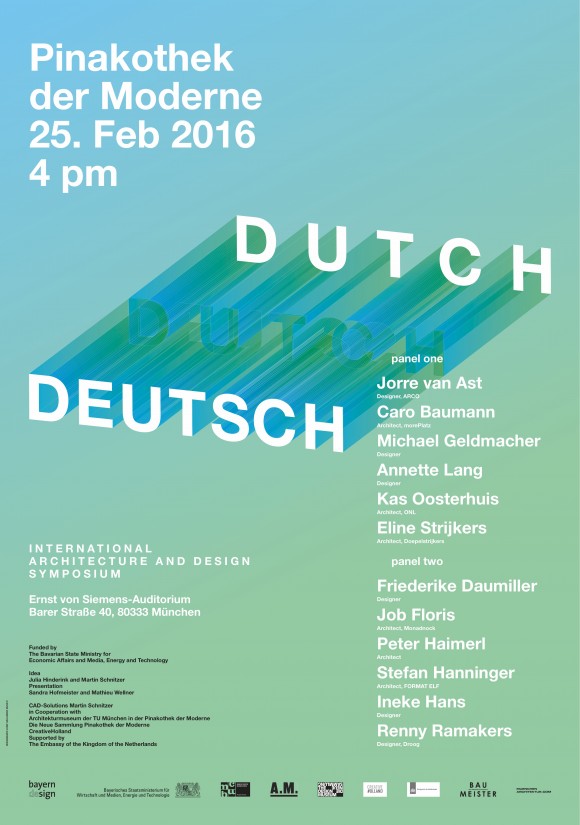
Renny Ramakers, co-founder of Droog, will be taking part in a major
international Architecture and Design Symposium in Munich, Germany on the
25th of February, 2015 from 16.00 – 20.00.
*About the Symposium:*
As a partner country of MCBW, The Netherlands is the most innovative and
important location for design in Europe. The Symposium „DeUTsCH“ will look
at the differences, similarities and potential synergies of the Netherlands
and Germany with regard to architecture and design.
During two panel sessions three Designer and three Architects from each
country will discuss the following questions:
Does Design and Architecure align differently in the Netherlands than in
Germany?
What are the diverse approaches of a designer and an architect?
How different or similar are they dealing with material and scale?
Where does architecture and design meet?
Read more on the program here:
http://www.mcbw.de/mcbw-2016/programm/liste/detailseite/event/deutsch.html
*Event details:*
When: Thu, 25.02.2016
16:00 – 20:30
Where: Pinakothek der Moderne | Ernst von Siemens-Auditorium
Barer Str. 40
80333 München
The event is in English.
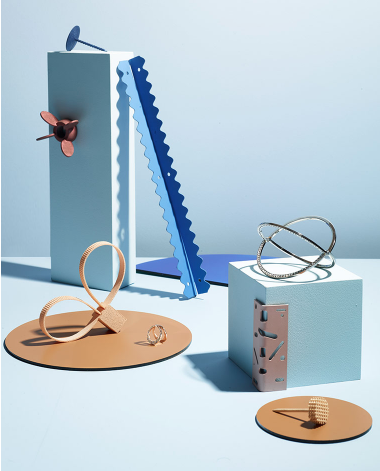
The hardware collection is awarded in the Design:Details category, you can see further information here
About Construct Me!
Our screws, hinges, nuts, nails, brackets and other hardware are super functional – in some cases we even extended their function – but they also add value, character and a richer narrative. In our created collection, you will find nails that reduce the risk of hitting your finger, two way tie wraps, fancy hinges and screws that smile at you. They give flavour to simple DIY work, revive existing furniture and challenge the designer.
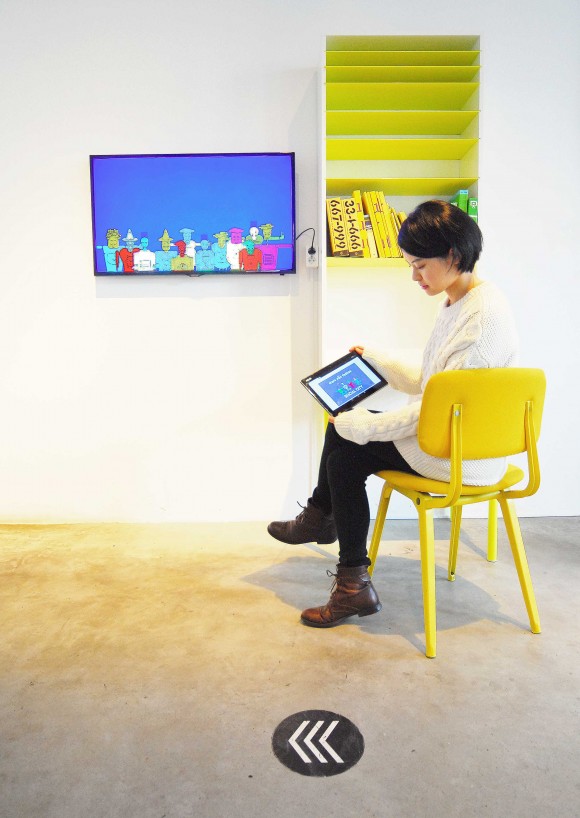
You are now invited to come and play the Social City quiz in Hôtel Droog.
Social City is a think tank based on your dreams and desires. Via the quiz you can share how you envision your ideal city life. For example, in what kind of house do you want to live? What would be the view from you Social City house? Do you want animals in your neighbourhood, which ones? What kind of mobility do you wish to use in Social City? What kind of technology do you aspire in Social City? If you answer these and other questions, you will get an avatar designed by Thonik. Together with people all over the world you build the virtual city!
Experts in architecture and city planning discuss your answers on the Social City platform. The objective is to find solutions and opportunities which match your ambitions, needs and dreams and which can be implemented in the existing daily environment. The ultimate goal is to upscale all results towards a larger infrastructure to arrive at a conceptual model for a (partly) self-organizing city.
You can play the quiz at home on the internet, but you are now also invited to play the quiz on the tablet in ROOMSERVICE, the elegant and airy café and tearoom of Hôtel Droog. Sit down at the beautiful Hardworking Desk, play the quiz and enjoy some of the finest homemade recipes or freshly made sandwiches. Our advice, don’t sweat too much!
See you at Hôtel Droog!
Where to play:
Hôtel Droog
Staalstraat 7a-7b
1011 JJ Amsterdam
When to play
Tue-Sun 11am – 6pm
Monday closed
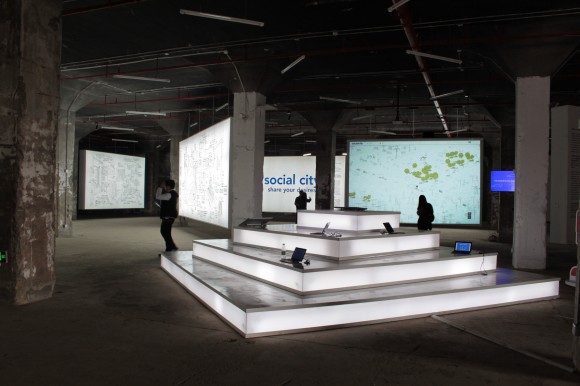
Social City at UABB 2015
The program Design+Desires examines how to link the dreams, desires and needs of citizens to their virtual and real daily experiences. Design+Desires combines the output of social media, active participatory citizen research, technology, and innovative design solutions.
Social City is a first full-scale exercise of the Design+Desires program and is commissioned by UABB for its 2015 architecture biennale in Shenzhen (China). Social City is curated by Renny Ramakers and presents the different steps for the creation of a model for a future city.
Two interactive installations, called ‘Babel’ by architect and computer programmer Mark van der Net, are directly tapping the social media (Weibo and Twitter) in Shenzhen and Hong Kong. We tap this media, because digital technology and social networks have drastically changed city life. With standard statistical methods it is hard to conduct research on this increased fragmented society. Via the social media tapping we can better explore how people are simultaneously connected with each other through the virtual and the real, what they talk about and where they are while using social media.
In Social City we do not perceive citizens as abstractions, for us the diversity of their dreams and desires are pivotal. Therefore artists Jan Rothuizen has taken the digital data mapping as starting point. From this data he selected and contacted people to meet in real life. Based on his encounters with a retired investor, a travel office employee, an Uber taxi driver, and a factory worker, he made drawings of their individual behaviours and desires.
We also capture the dreams and desires of citizens all over the world via the quiz on www.socialcities.org . People are invited to answer questions about their ideal city life. This generates a unique avatar that will have its virtual home in Social City, which is built according to the given answers in the quiz. We invite experts in the field of architecture, urban planning, sociology and economy to reflect on the content generated by citizens and to start a dialogue. We also make visualisations of the results.
The data from the platform will have to result in design solutions, the building stones for the future city. The challenge is to combine all different desires in one city model. Architect office TD did the first exercise, which is based on one of the questions in the quiz: “how would your house in Social City look like?” So far it turns out that most people want to live in a tree hut, a building block or a detached house. But there are also quite a few people who would like to live in a house boat or a mobile home and there are even people who do not want a house at all. TD’s ‘Treehousewaterboatappartmenthammocktower’ is a free interpretation of this diversity of desires, illustrated in a condensed example for one building block. It is no science fiction, but actually tested on technical feasibility.
Social City will be on display till March 1, 2016 at UABB, No.3 Gangwan Road, Shekou, Shenzhen (深圳市南山区港湾大道3号) . See photos here .
Follow Social City on Twitter, Facebook, or sign up for our mailing list to be amongst the first to get the news.
For more information and images: [email protected]
Celebrating 20 years of the Soft Lamp by Arian Brekveld for Droog
Droog in conversation with designer Arian Brekveld
20 years has passed since the first, honey white Soft Lamp graced interiors around the world. In combination with the Soft Lamp’s 20 year anniversary, a new, limited edition Black Soft Lamp is just released. We asked the Soft Lamp’s designer Arian Brekveld a few questions about his design philosophy, what he is up to now and, most importantly, where he himself has the Soft Lamp hanging in his home.
Have you seen much change in the dip technique, particularly since you have revisited the lamp shade in black?
The technique of dipping itself is virtually unchanged, but everything around the production method has improved. The development is mainly reflected in the new types of submersible materials. In addition, the production of moulds is greatly simplified by the new technology found in rapid CNC milling machines. Our producer has developed specialised immersion machines, incorporated with new specialised technologies. But ultimately the essence of dipping stays the same: you just dip!
How did you originally become acquainted with PVC dipping?
During my graduation at the Design Academy in Eindhoven (1995), I researched forgotten crafts and techniques. Eventually I came across the techniques of a dipping technician, actually one located right near Eindhoven. Dipped products back then were mainly technical, utilitarian and practical. Caps, sleeves, hoses. I took a lot of time to experiment with the dipping material. My experiments eventually led me to experimenting with light in combination different compositions of the paste, until a wonderful warm shine moved through the material. I still remember my enthusiasm! The Soft Lamp was the first interior product which has been manufactured using this technique, and was so was the first aesthetic application of the material.
Have other design processes developed because of the Soft Lamp?
The seemingly simple design of the Soft Lamp, combined with material research is something I love to bring back time and time again in my work. It is a combination of these properties that direct new and interesting concepts.
How do you see Droog’s philosophy complement that of the Soft Lamp?
The lamp dates back to 1995. During the second half of the 90s, many designers began to experiment with many materials – including plastics. For all the known and unknown material properties, new applications were sought; batch sizes were modest; and designers created their own products. From this, production processes without high investment costs became interesting, and creativity was rife. This is what we did, created from a simple, but very powerful focus – this fitted into the Droog thought.
The Soft Lamp is a trick of the eye, appearing as ceramic, when in fact it is rubber. This playfulness is integral to the product’s identity – is play an important part of your practice?
Not exactly, I consider it as a kind of hidden property – a trait that hopefully surprises and delights the user.
What is a core value of your own design method?
I design for many different brands. The type of products I’m working on therefore varies. I work with minority groups in remote areas in Vietnam and small scale artisanal products. At the same time, I work for Hella Jongerius for the new KLM business class seat, along with various large-scale industries. The differences in these design processes, and the type of products couldn’t be further apart. Different questions are born from different briefs and therefore very different design processes. I think the strength of my work to a large extent lies in switching between, and connecting such processes.
What production / design methods are you experimenting with at the moment?
In recent years I have been designing more and more furniture. In addition, like all design making, I prefer working to scale. It has become a kind of specialty of mine where I can quickly make my own idea, and therefore get to the core of the design. In so doing, the concept progresses and new, more richly-informed ideas develop. Also, prototypes help clients understand concepts much more efficiently.
And the most important question – where are your Soft Lamps hanging at home?
Still too many rooms in our house 🙂 10 years ago we bought a big old and dilapidated house, with many rooms. After the renovation, there was little budget left for the interior. At that time it seemed like a bad idea to quickly buy some cheap bulbs and hang up. A box of Soft Lamps was still in my studio. We then hung one in the bathroom, the hall, and above the sofa …and I must confess: they still hang there after 10 years!
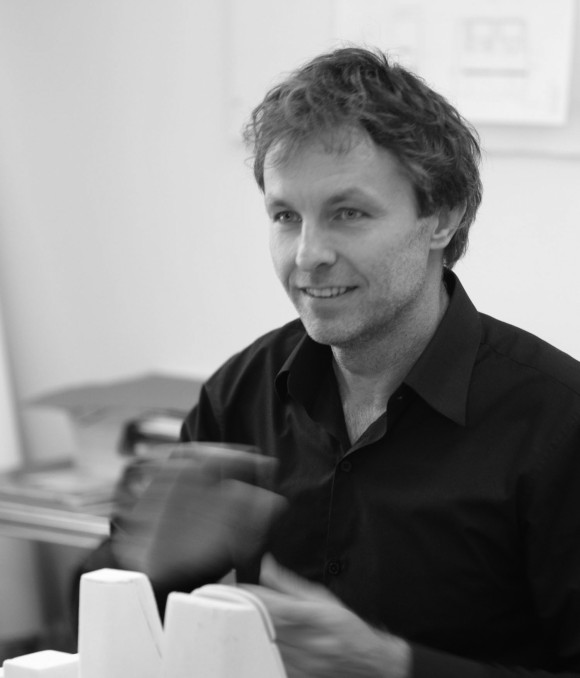
Soon Social City will be on display at UABB 2015 (Bi-City Biennale of UrbanismArchitecture) in Shenzhen (China, 4 December 2015 – 1 March 2016), No.3 Gangwan Road, Shekou, Shenzhen (深圳市南山区港湾大道3号) . In the meantime you can play the quiz! More quizzes will follow. Read here all about Social City at UABB.
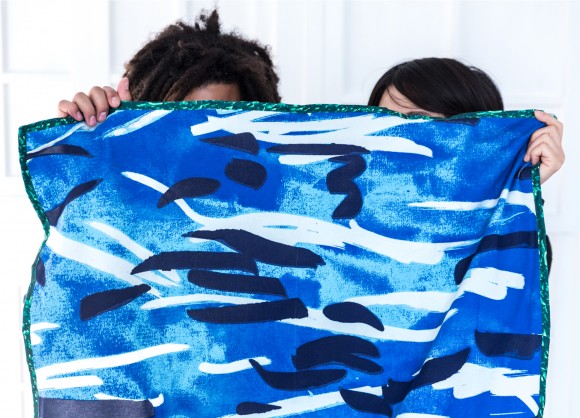
The canvases have turned. The technicolour life of Vincent van Gogh inspires contemporary tableware,
travelware and graphic designs by Studio Droog for the Van Gogh Museum in Amsterdam.
Vincent Willem van Gogh was not only a brilliant painter, but also a keen traveler and writer. For Van Gogh
Museum’s new museum shop in Amsterdam, Studio Droog was asked to design a range of products based
on Van Gogh’s artworks: Landscape with Houses, 1890 and Wheatfield under Thunderclouds, 1890. Looking
beyond the surface of these paintings, Studio Droog dove into the rich, fickle life of the artist, giving rise to
an eclectic collection of over 20 unique tableware, travelware, postcards and poster designs that echo his
life and art.
• Travelware based on Wheatfield under Thunderclouds, 1890 by Vincent van Gogh.
The travelware collection references the work Wheatfield under Thunderclouds, 1890 and appeals to Van
Gogh’s frequent globetrotting – even though he often became homesick. The range derives its playful
pattern from the artwork’s staccato brush-work and bold, bright colours – with each design heralding a
signature Droog twist.
The collection includes a toiletry bag that fits your entire life’s work of grooming; an eyemask that blocks
not only eyes but ears too; a scarf that works double-shift as a blanket; an unmissable luggage belt; a
foldable weekend bag – also possible to use on weekdays; and a wallet to keep not only cash, but priceless
memories too.
• Tableware based on Landscape with Houses, 1890 by Vincent van Gogh.
The blue blush of Van Gogh’s Landscape with Houses defines the ceramic and glassware collection designed
by Studio Droog. By deconstructing the image into layers, and editing them into individual patterns, Studio
Droog cleverly harnessed the signature linework of Van Gogh to create new patterns that can be played
with.
Translucent glass plates of various sketched patterning can be stacked to recreate the original painting;
glass and ceramic tumblers don dancing strokes and lines – as if doodled by Van Gogh himself; patterned
bowls and vases make masterpieces of your food and flowers; and tealights cast shadows of an impressionist
painter’s mark.
• Posters and postcards of words and images by Vincent van Gogh (soon to be released)
Van Gogh wrote regularly to his brother Theo. Within these writings lay a wealth of wisdom, that Studio Droog
translated into quotes for a series of postcards. And these wisdoms could have only stemmed from his love
of reading – where Studio Droog designed a stylized bookshelf of Van Gogh’s actual reading list in the form
of a poster.
About Studio Droog
Renny Ramakers founded Studio Droog in 2011. The studio creates concepts, spaces and products, all
based on our key principles: respect for the existing, context/relevance, beauty and playfulness. Distilled to
the simple idea of less+ more. The studio addresses client commissions as well as in house assignments. For
more information, please visit www.droog.com.
About the Van Gogh Museum Amsterdam
The Van Gogh Museum makes the life and work of Vincent van Gogh and the art of his time accessible to
as many people as possible. The museum’s collection features in excess of 200 paintings, 500 drawings and
almost all letters by Vincent van Gogh, alongside his collection of Japanese prints. The library is home to
more than 23,000 volumes. In 2014, the museum welcomed 1.6 million visitors through its doors.
The Van Gogh Museum is dedicated to making the life and work of Vincent van Gogh accessible to as
many people as possible in order to enrich and inspire them. We unite all elements of Van Gogh’s world.
Location
Paulus Potterstraat 7
1071 CX Amsterdam
The new museum shop is located in the new entrance building of the Van Gogh Museum in Amsterdam.
Opening Hours
Open daily from 9 am to 5 pm and until 10 pm on Fridays.
The shop is only accessible for museum visitors, and is open daily from 9 a.m. until 30 minutes after closing
time of the museum.
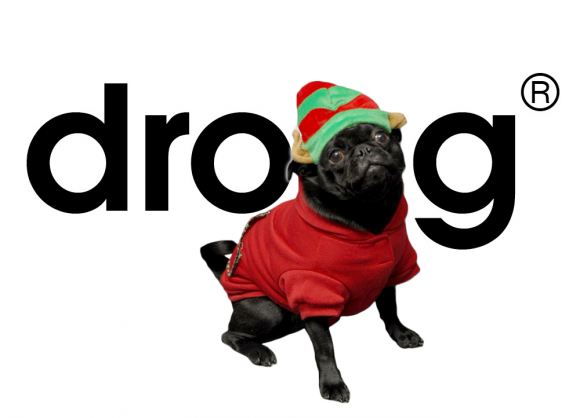
Droog is hosting an eclectic Christmas Program that’s a little more omni-faith than your usual seasonal affair. Dubbed ’Trans-Christmas’, the program is a celebration of everyone, everywhere – regardless of religion, gender, title, sexuality, favourite food – anything really.
The program hosts a series of events, charity auctions, workshops, gift ideas for him, her, the kids and gender neutral; as well as online content curated to express a celebration for all.
Join us for a very merry Trans-Christmas – and see below for the eclectic program.
The program for Trans-Christmas 2015 at Droog:
1. Make some Sound! Workshop by Trapped in Suburbia
What: Soundcard Workshop with Trapped in Suburbia
When: 10th December, 2015 18.30 – 20.00
More info and booking
2. “Manufactured” by the Wunderkammer
What: Shop in shop and winter exhibition by the Wunderkammer
When: 4-31 December 2015
3. The Price of Fashion: Fashion Charity Auction and Debate moderated by Aynouk Tan
What: Inaugural Fashion Charity Auction and Debate moderated by Aynouk Tan
This fashion charity auction will generate funds through auctioning
clothing items from well-known figures in the Dutch community.
This auction is complemented with a debate uncovering the value of fashion,
how its context changes when discussing it next to the refugee crisis,
how clothing gains significance through experience, in effect – what is the price of fashion?
When: 9th December, 2015 18.30 – 21.00
4. Style your Style with Droog: Seasonal design styling advice from Droog
What: Get professional advice on how to style your dinner table, home or space
with Cecile Brekelmans of Droog.
When: Throughout the holiday season, by appointment – contact [email protected] for
more information.
People all over the world are invited to express their desires via a virtual platform and quiz at
Socialcities.org.
People can create an avatar and see the city grow. Socialcities.org is also a think tank. Quizzes on a
variety of topics generate visual data maps, research, reflection and discussion.
The project is part of a broader research-and-do-program developed by Renny Ramakers
(Co-founder of Droog). The program examines the world’s city life starting from small scale to the
larger whole by acknowledging the passions and needs of people. Social City is the first exercise.
The average person intimately knows 50 people. These people probably met through a predestined
network – a network of people limited by nationality, income, school and work.
Next to this, the world is changing fast and it’s splintering. Mohammed in Africa probably has more
in common with David in the UK than he does with Ibrahim in his same-city friendship circle. Bringing
Mo and David together not only nurtures shared interests, but also individual diversity due to their
birthplace heritage.
Everything has changed around us. We embrace internet, technology, social media, globalization.
Yet, the way cities are designed is surprisingly similar to 50 years ago. Cities do not keep up with this
fast-paced status quo and its fragmenting diversity of lifestyles.
Imagine cities built like matchmaking sites, connecting like-minded people with shared dreams and
desires. Imagine our social circles not being designed by top-down decision making, but by our
mutual passions. Imagine desires designing our cities.
The online platform Socialcities.org addresses all of this by using play and techno culture to capture
the dreams and desires of ordinary citizens. This makes for a city that understands changing global
culture, a city without borders, or rules or top-down planning.
Socialcities.org is an exercise in individuality and explores how countless identities can make up a
diverse whole. It is a think tank based on the desires and dreams of citizens. The world has changed,
now it’s time for the city.
Socialcities.org is created by Renny Ramakers (Droog / Design+Desires) and Mark van der Net
(OSCity) in collaboration with Thonik (design). It is part of the broader Social City project at Shenzhen
Urbanism/Architecture Bi-City Biennale (UABB, 1/12/2015 – 1/3/2016), curated by Renny Ramakers.
For more information please contact:
[email protected]
www.socialcities.org
www.designdesires.org
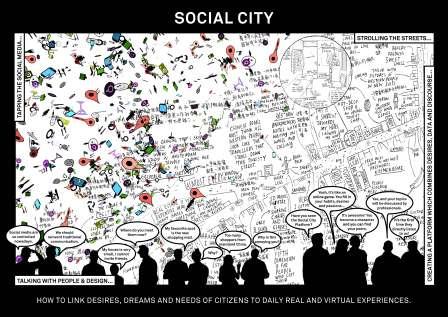
At the Next City Living Lab during the Beijing Design Week (23/9 – 7/10, 2015) the beta version of the Social City online platform will be launched.
Cities are becoming larger and larger, smarter and smarter. Technology is supposed to solve all city problems. Governments, companies and urban planners are eager to do so. But what about citizens? What do they think? Can they have a say? In Social City they have!
Social City is an online platform which, via a game-like experience, invites CITIZENS all over the world to share their dreams, desires, and needs. This input will generate a virtual city. People can build a house, define their neighborhood, envision their community, arrange their mobility, choose their economy, and can even decide how to rule Social City.
Multiple choices are possible. People can check out what other Social Citizens are dreaming of doing and being. If they become inspired by them and want to revise their city, they could simply create a new avatar and play the game again. The more people participate, the more Social City will grow.
In Social City the citizens take the lead, and experts in architecture and city planning are invited to reflect on the shared desired elements which constitute Social City. It challenges top down city planning. The platform is a unique online combination of shared dreams and desires of citizens, hard data and discourse by professionals.
The platform is part of the Social City project at Shenzhen Urbanism/Architecture Bi-City Biennale (UABB, 1/12/205 – 1/3/2016), curated by Renny Ramakers (Droog Foundation/Design+Desires).
Social City platform is curated by Renny Ramakers in collaboration with Mark van der Net (OSCity). Technical implementation: OSCity. Graphics: Thonik.
Exhibition venue in Beijing: The Nurturing House, Sanjing Hutong No. 21, Dashilar, Xicheng District, Beijing, 100051